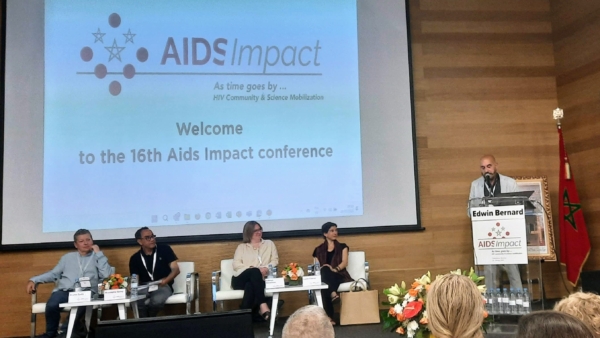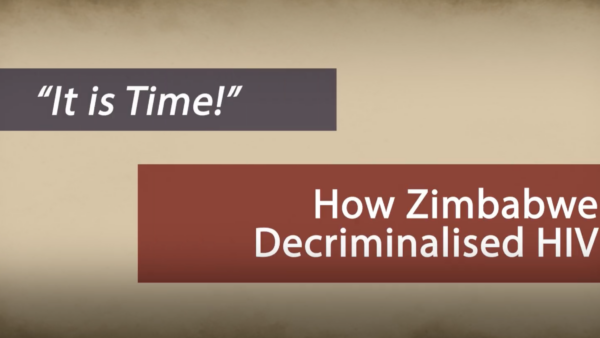
Reaching Unreached Migrants In Unorganised Workforce With Health Services – OpEd
According to the Ministry of Labour and Employment of Government of India, the workers in the unorganised sector constitute about 93% of the total workforce in the country. A lot of them are informal migrant workers who live in difficult conditions and are most likely to be left behind when it comes to accessing healthcare and social protection services.
“My humble submission is that unorganised sector workers should be put first for serving their healthcare and social protection needs,” said Syed Mohammad Afsar, who leads the global HIV/AIDS programme for ILO (International Labour Organization). ILO is one of the oldest United Nations agencies which focusses on social and economic justice by advancing labour standards.
“Gujarat is an Indian state that receives many migrant workers – they include those coming from neighbouring states as well as those who come from different districts of Gujarat. These migrants work in the informal sector and face a lot of hardships and challenges- such as violence, inadequate income, or vulnerable situations where their rights may not be protected. That is why since the last almost three years now, we have focussed on Gujarat to promote HIV testing among informal sector workers,” added Afsar. Addressing gender-based violence, income disparities which make people vulnerable to HIV, and other vulnerabilities is also vital.
India, along with other countries, has promised to end AIDS as a public health threat by 2030. Scientific evidence shows that if a person living with HIV is receiving lifesaving antiretroviral treatment and remains virally suppressed, then he/she/they can live normal healthy full lives and the risk of any onwards spread of HIV from that person is zero. At the same time, all others should have full access to HIV combination prevention options in an evidence- and rights-based manner.
Afsar shared that ILO intervention in Gujarat has been developed together with the government’s Ministry of Labour and Employment, local employers and trade unions, and other partners to address both: HIV and TB among informal sector workers. Ending discrimination and building capacities is so key, says Afsar. Community-based HIV testing was one of the hallmarks of these efforts.
GAP is filling the gap in health service coverage of unorganised workforce
One such project of ILO was implemented by organisations like GAP (Gujarat AIDS awareness and Prevention unit – GAP – which is part of the International Society for Research on Civilization Diseases and on Environment – ISRCDE).
“GAP has reached out to those who were unreached,” said Afsar while speaking with CNS founder head Shobha Shukla on the sidelines of world’s largest AIDS conference this year (25th International AIDS Conference or AIDS 2024). “It is critically important to reach the first HIV target – which is to ensure that at least 95% of people living with HIV should know their status. People need to get diagnosed to receive the lifesaving treatment.”
GAP-led initiative found that the HIV rate in the informal sector workers they served was 0.36%, which is higher than the national average of 0.23%.
GAP leaders Jogendra Upadhyay and Pankaj Patel both spoke to CNS. They also serve on the leadership of INN – a pan-India network of over 350 groups working on issues related to HIV/AIDS- and were among the distinguished presenters at AIDS 2024.
“Well-planned targeted interventions of National AIDS Control Organisation (NACO) of the government of India also serve the migrant workforce. But it has perhaps not reached everyone, such as construction workers, small scale industry workers, farm workers, agriculture market informal workers, fruit and vegetable market workers, quarry workers, among others. We have to reach them with full cascade of comprehensive health and social protection services so that no one is truly left behind,” said Jogendra Upadhyay.
“Put human being first is a mantra of our founder late Dr Radium Bhattacharya as our first accountability is to the people we serve who are our first stakeholder too,” said Pankaj Patel.
GAP took the challenge of serving those who are left behind
“One problem is that migrant workers in unorganised or informal workforce change every year. They work for a few months and then go back to their native place because of ‘seasonal migration’. One example is of those who work in cold storage warehouses in Gujarat. Cold storage warehousing involves the storing of perishable or other temperature sensitive goods like food, at a specific temperature range to maintain their shelf-life and quality. About 10,000 workers from eastern Uttar Pradesh, Bihar, Odisha, and other states, work in cold storages in Gujarat for six months. Next year, all those who turn up to work could be different. This increases vulnerability to HIV, TB, sexually transmitted infections (STIs), and also breaks the continuum of care,” said Jogendra.
GAP engaged employers and employers’ associations at local and state level, along with trade unions, district TB offices (DTOs), Gujarat State AIDS Control Society of the government, and other partners who could help provide comprehensive care to the workers. “Engaging the local contractor who hires labour workforce is also very important,” points out Jogendra.
GAP organised over 15 meetings of all those who had a role to play in helping support the initiative to reach the unreached informal sector workers.
“First step was to survey over 1,200 people from labour workforce for a range of vulnerability-related factors,” said Pankaj. “20% of them reported to have multiple sexual partners. We could also connect with few who reported to be gay men and other men who have sex with men or female sex workers. These were hidden communities,” rightly says Pankaj and Jogendra of GAP as these people were not able to benefit from the existing interventions for migrants.
Four-Fifths did not go to health centre so as not to lose their daily wage
“Our survey shows that 78% of these persons did not go to the health centres of integrated counselling and testing centres of the government as they did not want to lose their daily wages – and rather preferred if such a service was available at their workplace,” said Jogendra.
“That is why, all programmes of GAP are done at the workplace of workers,” emphasised Jogendra.
Community-based HIV and TB screening, community-based HIV testing, linkage to HIV and TB care services, and a range of comprehensive support services are key elements which makes GAP’s intervention at workplaces of migrant workers so successful.
Game: Ladder signifies Do’s – and Snakes signify Don’ts
GAP not only uses flipcharts for raising awareness, but also uses the widely popular ‘snakes and ladders’ board game, but with a difference: ladder is for those who give the right answer (they move upwards in the game), and snake is for those who give a wrong one (they go downwards in the game).
Games help us engage people more and convey important messages related to HIV (and STIs, TB, hepatitis) prevention, testing and treatment in a more effective way, says Jogendra.
Agrees Afsar of ILO: “I have seen how GAP volunteers use ‘snakes and ladders’ game to engage people at workplaces. If you give the right answer, you go upwards, and if you give the wrong answer, you go downwards. These are inter-educational approaches that need to be leveraged upon to enhance health seeking behaviour.”
GAP’s impact
In a span of three years, GAP (via its community-based intervention), has screened almost 40,000 migrant workers for HIV and TB at the workplace of informal or unorganised workforce in few districts of Gujarat. Out of those screened and tested, 87% were first-time testers for HIV in their lifetime, informed Jogendra.
Thanks to GAP’s important work in bridging the divide between the reached and unreached with services, 116 people were diagnosed with HIV and 37 with active TB disease (and one worker with drug-resistant form of TB, HIV and cervical cancer) – and all of them were linked to the nearest government-run treatment and care services.
“It is important to note that 96% of those diagnosed with HIV were asymptomatic – they had no symptom. Worksite interventions help find people early and link them with public care services,” said Jogendra.
Once found positive for HIV (or active TB disease), every person is linked to the government-run programmes without any delay. We link those with HIV to the nearest centre which provides antiretroviral treatment, and those with active TB disease to the district TB programme, said Jogendra.
“In addition, we also help them avail of the benefits from government-run social protection schemes, such as e-Shram Card (for labour and employment) and Ayushman Bharat Card (for health coverage),” said Jogendra.
Community-based services are critical to reach the unreached
Afsar shares that “Community-based HIV testing was an important part of migrant workers testing project – they got rapid test kits from Gujarat State AIDS Control Society of the government. These kits were given to community volunteers after proper training, so that they could take those test kits and offer a test in communities.”
Jogendra reflects: “Our next step is testing family members (spouse, children, or others) for HIV and TB – and linking them to care as needed. But our project is a humble initiative whereas India is a large and diverse nation. There is an urgent need to scale up interventions to reach the unreached workers of informal or unorganised sector in every other state and ensure continuum of care.”
GAP partners with local district TB office of the government’s National TB Elimination Programme, which trains them in doing community-based TB screening (looking for classical TB symptoms), collecting sputum samples and handing them to laboratory of primary health centre or sub-centre for TB testing. If active TB disease is detected, then GAP supports the person through the TB treatment and ensures completion. GAP also ensures that the person is availing government-support schemes such as those that provide INR 500 per month of financial support (directly in the bank account of the patient) during treatment. GAP also provides supplementary nutritional support like protein powder, vitamin syrup, or other local nutritious food.
Over 96% of people screened for HIV were also screened for TB voluntarily, says Jogendra. Many were also screened (and referred as indicated) for hepatitis and a range of STIs.
One recent example of a person-in-need supported by GAP is of a female labour worker of a cold storage warehouse. She was diagnosed with HIV, multidrug-resistant TB, and cervical cancer. She received her treatment through local government-run antiretroviral clinic, treatment for drug-resistant TB through local government-run TB clinic, and referred to a gynaecologist for cervical cancer management, informed Jogendra. “Her son was linked to government-run scholarship programme for education in Gujarat state.”
Comprehensive care is vital, feel Jogendra and Pankaj. For instance, they also screen people for diabetes and blood pressure. Diabetes can heighten risk for TB as well as complicate outcomes of HIV care.
Every six months a person with HIV is offered a TB test.
No wonder that ILO has recognised GAP’s work several times as a best practice example, share Jogendra and Pankaj – for helping make a difference and doing justice to the legacy of Dr Radium Bhattacharya and GAP.
Do we know how to reach those who are currently unreached?
We are aiming to reach 95% of people living with HIV by 2025 so that they can know their status, and 95% of those who know their status should receive the treatment, and 95% of those on treatment should be virally suppressed. But do we have the right programmatic mix to reach those we are leaving behind- the unreached?
GAP’s intervention, supported by ILO and many other partners, provides some insights.
“We must reach the places where we have not reached earlier – such as places where migrant workers sit, work or live. They often do not have time to go to a health facility and get tested – if they go there then there is an opportunity cost – they do not get the daily wage for that day – therefore we have to take the services where they are,” reemphasises Afsar.
“A large number of people have been tested (for HIV), and those who are found positive are put on treatment. These are the people who were asymptomatic and a lot of them were young people, who are now on treatment and virally suppressed so that they can lead happy and productive lives,” rightly says Afsar.
Awareness or health literacy is key
We have to enhance risk perception for both TB and HIV so that people consider taking a TB test or HIV test and linkage to public services. “That is why in our workplace programmes we take help of peer educators, who go and create awareness, and enhance risk perception – this cannot be done in a lecture-driven or PPT driven approach,” said Afsar.
“We never impose HIV (or TB) testing. Testing is not the first step. First step is awareness generation – and do it in an environment where people’s rights are protected. That is why we engage and sensitise the employers and government agencies too along with other stakeholders to give confidence to workers that if they are found positive (for HIV or TB) they will not risk losing their job. Instead, they will get support, care and treatment to live healthy and well,” said Afsar.
Health justice in a socially unjust world
We all have to strive for health justice, and eventually social justice, which is ecologically sustainable. HIV, TB, hepatitis or STIs responses are part of this overarching approach. Let us hope GAP continues to bridge the gap in access to healthcare and social protection for those in informal or unorganised sector – and such people-centred approaches get scaled up everywhere.








